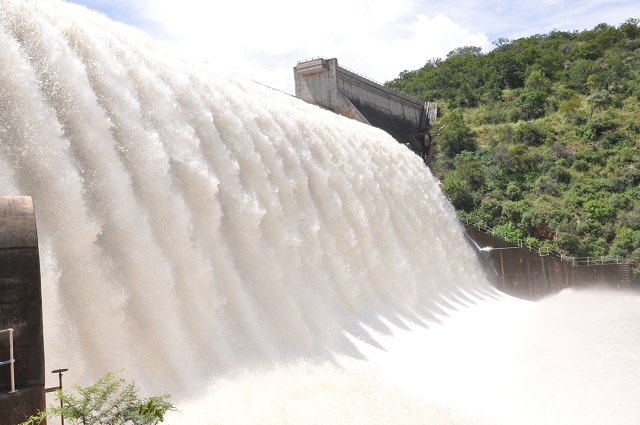
The Sunday News

Tinomuda Chakanyuka, Senior Reporter
THE national dam level average is a far cry from reaching record levels, despite improved rainfall this season underlined by torrential rains and a tropical storm which resulted in floods in the southern parts of the country, statistics show.
However, the national dam level average is now above the expected national average of 60,1 percent during this time of the year and can last the country until the next rainy season.
According to the Zimbabwe National Water Authority (Zinwa) the national dam level average stood at 65,5 percent as at Friday last week.
The highest average national dam water level to be recorded in the country was 100 percent in 2000, followed by 98 percent in 2001. Other years when the country recorded dam level averages above 60,1 percent by February included 2002 (95 percent), 2004 (85 percent), 2007 (79 percent), 2009 (82 percent), 2011 (85 percent), 2014 (80 percent) and 2014 (78 percent).
Zinwa corporate communications and marketing manager Mrs Marjorie Munyonga said the present national dam level average was adequate for the country’s water needs until the next run off.
“Generally current dam levels can supply over 21 months. This means that water accumulated in the dam storage can go through 21 months fulfilling the 21 months rule that states that stored water that can sustain for such a period may be deemed adequate,” she said.
Mrs Munyonga explained that a number of factors had contributed to the prevailing national dam level average being lower compared to other years when the country received meaningful rainfall.
“It should be noted that several factors affect these figures, with issues like the level at the beginning of the season and the number of new and larger dams over time. Larger dams tend to lower the average as they are more voluminous and require more run off and time to fill up,” she said.
Added Mrs Munyonga, “The overall capacity carried by our dams increased due to the inclusion of Tokwe Mukosi which has a net capacity of 1,8 billion cubic metres which is the size of Manyuchi, Zhove, Manyame, Chivero, Mazvikadei and Osborne dams combined.”
Mrs Munyonga said an analysis would be conducted at the end of the hydrological season taking into account dams that were constructed between 2000 and 2017.
“The hydrological season starts in October and ends in September. In light of the cyclone we had, we are still recording the inflows and it would be incorrect to compare with cyclone Eline at this point because the season is not yet over,” she said.
According to Zinwa, as at Friday last week a total of 111 dams were spilling. Mrs Munyonga said the authority would continue to monitor the spilling dams and open flood gates where necessary to prevent the water bodies from bursting.
Statistics from the water authority show that as at Friday the six supply dams for Bulawayo were at 84 percent capacity and can last the city up to 23 months.
In Masvingo, Lake Mutirikwi, is now only 20,5 percent which is enough water supply for 30 months. Dams supplying Harare, its satellite towns and Chinhoyi are at an average of 98,6 percent, enough supply until the next run off.
Whitewaters, Amapongokwe and Gwenoro dams, which supply Gweru, are at an average capacity of 106 percent, enough to sustain the city for the 29 months.
Gwanda’s water sources, Lower Mujeni and Weir water are at an average 111 percent and with augmented supply from Mtshabezi, which is 82,6 percent full the town has enough water supplies for the next 19 months.
In Kwekwe, Sebakwe and Lower Zivagwe are at 104 percent which can last the mining town until the next run off.
Zimbabwe, like most parts of the Southern African region, received erratic rains during the past rainy season due to the effects of El Nino weather pattern. However, with the prevailing LaNina weather the country has received abundant rainfall which has also been accompanied by a tropical storm that has left a trail of destruction in some parts of the country.
@irielyan



